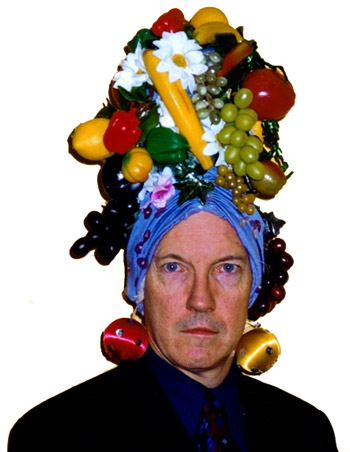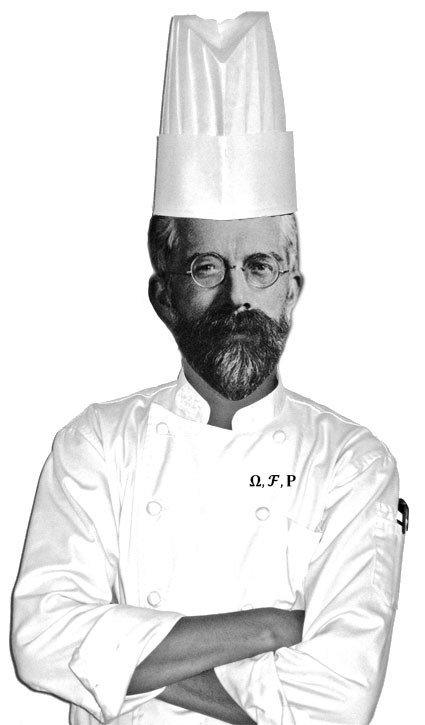
In his book Quantum Computing Since Democritus, Scott Aaronson poses the following question:
Suppose that you’re at a party where every guest is given a hat as they walk in. Each hat has either a pineapple or a watermelon on top, picked at random with equal probability. The guests don’t get to see the fruit on their own hats, but they can see all of the other hats. At no point in the evening can they communicate about what’s on their heads. At midnight, each person predicts the fruit on their own hat, simultaneously. If more than 50% of the guests get the correct answer, they’re given new Tesla cars. If less than 50% of the guests get it right, they’re given anxious goats to take care of. What strategy (if any) can they use to maximize their chances of winning the cars?
Answer: there is no strategy that works.
Kidding! Of course there’s a strategy, as you can tell by the length of this post. Did you come up with any ideas? At first glance, it seems like the problem has no solution. If you can’t communicate with the other party goers, how can you find out any information about the fruit on your own head? Since each person was independently given a pineapple or a watermelon with equal probability, what they have on their heads tells you nothing about what you have on your head, right?
My own initial strategy, after considerable (but not enough!) thought, was to bet on regression to the mean. Suppose you see 7 pineapples and 2 watermelons. The process of handing out hats is more likely to generate a pineapple/watermelon ratio of 7 to 3 than 8 to 2 (it’s most likely to generate an equal number of each type, with every step away from a 5/5 ratio less and less likely). Thus, I figured it would be best to vote that my own hat moved the group closer towards the mean. Following my strategy, we all ended up with goats. What did I do wrong?
The key to solving this problem is to realize that the initial process for handing out hats is irrelevant. All that matters is that, from the perspective of a given person, they are a random sampling of 1 from a distribution that is known to have either 7 pineapples and 3 watermelons, or 8 pineapples and 2 watermelons. Thus, each person knows that the probability a randomly sampled guest will have a pineapple on their head is somewhere between 70% and 80%. More precisely, it’s either 70% or 80%. In any case, so long as every person votes for themselves being in the majority, then the majority of guests will be voting that they are in the majority.
I simulated this strategy using parties of different sizes, all of them odd (to avoid the issue of having and equal number of each hat type). Here’s the plot, with each point representing the mean winning percentage with 500 trials for each group size. As always, you can find my code at the end of the post.

As you can tell from the chart, once we have 11 or more guests, it’s highly likely that we all win Teslas.
One way to look at this problem is through the lens of the anthropic principle. That is, we need to take into account how what we observe gives us information about ourselves, irrespective of the original process that made each of our hats what they are. What matters is that from the perspective of each party goer, their view comprises a random sampling from the particular, finite distribution of pineapples and watermelons that was set in stone once everyone had entered the room. In other words, even if the original probably of getting a pineapple was 99%, if you see more watermelons than pineapples, that’s what you should vote for.
This problem, by the way, is related to Condorcet’s Jury Theory (featured on the most recent episode of Erik Seligman’s Math Mutation podcast). Condorcet showed, using the properties of the binomial distribution, that if each juror has a better than 50% chance of voting in accordance with the true nature of the defendant, then the more jurors you add, the more likely the majority vote will be correct. And vice versa. Condorcet assumed independence, which we don’t have because our strategy ensures that every person will vote the same way, so long as the difference between types of hats is more than 2.
# Code by Matt Asher for StatisticsBlog.com
# Feel free to modify and redistribute, but please keep this header
set.seed(101)
iters = 500
numbPeople = seq(1, 41, 2)
wins = rep(0, length(numbPeople))
cntr = 1
for(n in numbPeople) {
for(i in 1:iters) {
goodGuesses = 0
hats = sample(c(-1,1), n, replace = T)
disc = sum(hats)
for(h in 1:n) {
personHas = hats[h]
# Cast a vote based on what this person sees
personSees = disc - personHas
# In case of a tie, the person chooses randomly.
if(personSees == 0) {
personSees = sample(c(-1,1),1)
}
personBelievesHeHas = sign(personSees)
if(personBelievesHeHas == personHas) {
goodGuesses = goodGuesses + 1
break
}
}
if(goodGuesses > .5) {
# We win the cars, wooo-hooo!
wins[cntr] = wins[cntr] + 1
}
}
cntr = cntr + 1
}
winningPercents = wins/iters
plot(numbPeople, winningPercents, col="blue", pch=20, xlab="Number of people", ylab="Probability that the majority votes correctly")



